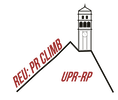Project Title: Exploring the bioactivity of fullerene and steroid derivatives.
Research overview. Our laboratory combined two areas of research: chemistry education research in organic chemistry (CEROC) and biochemistry and the second area is the organic synthesis of new materials and drugs. The CEROC projects include developing new undergraduate laboratory experiments with the integration of new technology and instrumentation for organic chemistry and biochemistry, and the study of the student performance in traditional vs online lectures to improve the BS chemistry curriculum and introduce new elective courses such as food chemistry, natural product chemistry, organometallics, etc. In the area or organic synthesis, the aims include the synthesis and characterization of fullerene C60 using asymmetric catalysis and cycloaddition reactions and the functionalization of steroidal compounds. The biochemistry research includes the use of the new fullerene and steroidal derivatives to study how they affects the mitochondrial respiration, glycolysis, and ATP production in different cell lines to identify new drug candidates. The Project SEED student will collaborate with the developing of organic and biochemistry experiments and with the synthesis of the new fullerene and esteroidal compounds.
Skills/Techniques: PR-CLIMB participants will learn about chemical education ideas and its implementation, assessments process, organic synthesis, biochemistry, anhydrous reaction techniques, purification and isolation techniques such as thin-layer chromatography (TLC), column chromatography (CC), recrystallization, and measurement of melting and boiling points, compound characterization using different spectroscopic techniques such as 1H and 13C NMR, Infrared Spectroscopy (IR), Utraviolet-Vis (UV-Vis) spectroscopy and the use of X-Ray and polarimeter, macro- and microscale practices and the green chemistry principles.
Skills/Techniques: PR-CLIMB participants will learn about chemical education ideas and its implementation, assessments process, organic synthesis, biochemistry, anhydrous reaction techniques, purification and isolation techniques such as thin-layer chromatography (TLC), column chromatography (CC), recrystallization, and measurement of melting and boiling points, compound characterization using different spectroscopic techniques such as 1H and 13C NMR, Infrared Spectroscopy (IR), Utraviolet-Vis (UV-Vis) spectroscopy and the use of X-Ray and polarimeter, macro- and microscale practices and the green chemistry principles.
To contact Dr. Raúl R. Rodríguez-Berríos you can write to the address below
E-mail: [email protected]
E-mail: [email protected]

